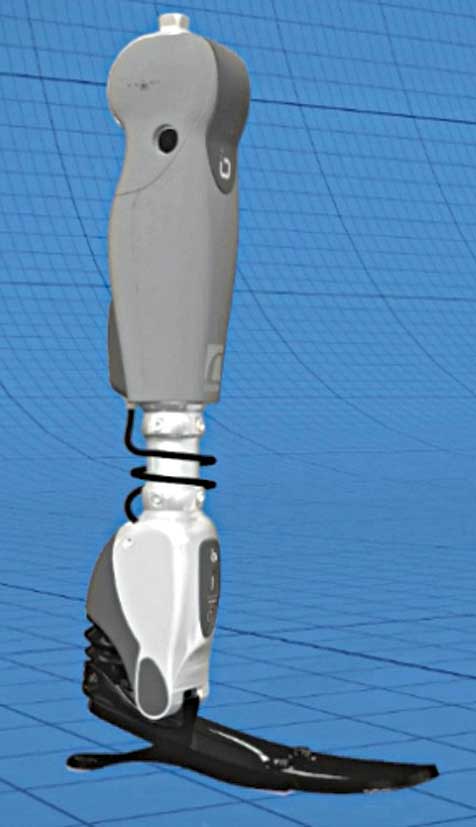Conventional optical systems, such as microscopes and cameras, are limited by diffraction, a phenomena in which light bends as it passes around an edge or through a slit.
Metamaterial hyperlenses overcome the diffraction limit by transforming decaying evanescent waves into propagating waves. Once converted, the former decaying waves, which were commonly lost in conventional imaging, can be collected and transmitted using standard optical components.
Lift your house in case of an earthquake
The future vision for Greg Henderson of Arx Pax, makers of Hendo Hoverboard, is deploying the technology Hendo Hoverboard uses on a large-scale to protect houses during a massive earthquake.
Arx Pax has in place systems that employ water or gas to lift homes. It, however, aims to eliminate the structural movement entirely and use magnets instead. Their goal is to have the building’s landing gear react and activate the hover engines as soon as an earthquake strikes.
In order to lift a three-story home for about 90 seconds, which is the length of an average earthquake, the power required can be supplied using five car batteries.
Arx Pax would require installation of the hover engines and an earthquake-proof base. Computers would automatically turn on the engines as soon as these sense an earthquake. These will also have ShakingAlert software system that senses earthquakes, integrated in the system, which has successfully detected earthquakes in the past.
Bionic legs that are thought-controlled

Researchers in Iceland have developed bionic legs that can be controlled by a person’s thoughts alone. It involves surgically implanting myoelectric sensors (IMES) into a person’s residual muscle tissue to measure and interpret signals travelling between the brain and its nerve-endings. The implanted sensors send wireless signals to the artificial limb’s built-in computer, enabling subconscious, real-time control and faster, more natural responses and movements.
This new mind-controlled technology developed by Ossur for lower-limb prosthetics is designed to be compatible with its line of bionic feet, knees and legs. A coiled-wire receiver inside the prosthesis’ cup picks up impulses and transmits these wirelessly to the robotic limb.
A computer made out of water droplets
An assistant professor of bioengineering at Stanford University, the USA, Prof. Manu Prakash has created a water based computer. He, along with his two students, has devised a system with the help of tiny water droplets that could work as a computer clock.
For this, water droplets are trapped in a magnetic field. When applied to a flipped magnetic field, these form a precise motion in a fixed direction.
According to the team, the system can be made smaller by controlling millions of droplets with the help of the magnetic field, so that it can perform a higher number of operations on a single chip.
According to Prakash, this computer founds its application in biology and chemistry by converting the computer into a high-throughput laboratory.
Power gadgets from six metres away
A team of engineers from University of Washington, Seattle, the USA, has presented a research paper titled ‘Powering the Next Billion Devices with Wi-Fi’ that discusses how a Wi-Fi router can be used to provide far-field wireless power for gadgets. In their first prototype, for the first time in the world, they have demonstrated how Wi-Fi chipsets can power camera sensors or li-ion coin-cell batteries from more than 6m (20-feet) away. Wi-Fi receivers had so far been used to capture information from Wi-Fi radio broadcasts. The research team has sought a way to harvest energy from these broadcasts.
The engineers connected an antenna to a temperature sensor and put it near a Wi-Fi router so that voltages in the device could be measured to determine the time for which the device could operate on a remote power source. To make things work, they programmed these devices for broadcasting continuous power to an energy-harvesting sensor. The results showed that a temperature sensor could operate at a distance of up to six metres.
Pocket-size drone that can fold up
Researchers have designed a small, foldable drone, inspired by origami, which can unfold itself automatically and take flight within a fraction of a second. A large number of these quadcopters, the size of an outstretched palm, could be released over a disaster zone to take photographs and make contact with survivors.
When the device is not in use, the arms, which are made of fibre glass and light, yet rigid polyester, fold up into a trapezoid. When switched on, force of the propellers causes the arms to unfold horizontally. Then, magnets keep the arms locked into position.
For the drone to remain stable during flight, two propellers (diagonally across from each other) spin in opposite directions from the other two. Propellers all spin in the same direction at first while the drone unfolds, but a sensor detects when the arms have locked into position, and within 50 milliseconds, direction of two of the rotors is reversed, and the drone is ready to take flight.






